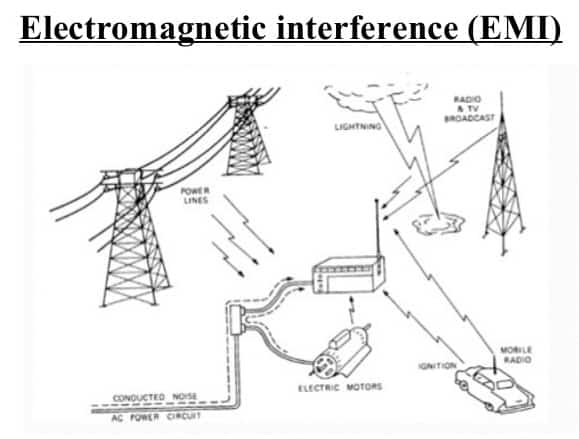In our modern, hyper-connected world, we rely on a vast array of electronic devices. Each of these devices, while making our lives easier, emits a form of energy known as electromagnetic waves. When these waves disrupt the normal functioning of an electronic device, we encounter a phenomenon called Electromagnetic Interference, or EMI.
Understanding EMI is crucial, not just for professionals in the field of electronics and telecommunications, but for anyone who uses technology daily. In this article, we delve into what Electromagnetic Interference is, how it can affect your devices, and why it’s important to manage it.
What is EMI (Electromagnetic Interference)?
EMI is the electrical noise induced in cabling by the presence of nearby electrical equipment such as motors, air conditioners, fluorescent lights, and power lines. Electromagnetic interference (EMI) can interfere with the transmission of signals.
EMI is only a problem with copper cabling. It’s caused when the changing electromagnetic fields generated by one cable induce extraneous currents or interference in adjacent or nearby cables. EMI in copper cabling can be reduced to acceptable levels by
- Avoiding bunching of unshielded cabling
- Keeping all cabling away from power cords and transformers
- Using shielded twisted-pair (STP) cabling instead of unshielded twisted-pair (UTP) cabling
- Enclosing cabling in external mesh or wire shielding
- Properly grounding electrical equipment and external shielding
- Taking care not to excessively untwist the terminating ends of twisted-pair cabling

EMI can be a greater concern in heavy industrial settings where high voltages and equipment, such as motors and generators, produce high levels of electrical noise. Using coaxial cabling in these settings affords greater resistance to the effects of EMI than using twisted-pair cabling. Fiber-optic cabling is an even better solution in heavy industrial settings because it is wholly resistant to EMI. (Changing electromagnetic fields have no effect on the light waves traveling along a glass fiber.)
How to prevent Electromagnetic Interference?
Because anything that carries rapidly changing electrical currents gives off electromagnetic emissions, it is quite common for one object’s emissions to “interfere” with another’s. EMI compromises the performance of electrical equipment by obstructing and degrading data; sometimes even losing data completely.
EMI regulations help keep the multitude of electronic devices functioning properly. Without these regulations, our electronic devices would suffer a significant degradation of performance and data loss.
Some basic options for preventing EMI include:
- Keeping electronic devices away from heavy machinery, motors or generators.
- Using shielded cables.
- Using EMI filters
- Using a snubber network between two contacts under 2 A
Can Electromagnetic Interference (EMI) be measured?
We can detect Electromagnetic Interference and measure Electromagnetic Fields. Check the example below:
But there is equipment that measures dirty electricity (a.k.a. electrical noise, line noise, power line EMI) present on the wiring in buildings. The Greenwave Broadband EMI Dirty Electricity Meter do just that.